Supply Chain Transparency Is a Business Necessity


Considerations about sustainability in the supply chain are no longer optional. In all regions of the world, these issues are front and center of both the business and political agenda.
When it comes to the supply chain, transparency is not the first instinct of business. A company’s sourcing practices can be one of the ways to stay ahead of the competition. But, when it comes to sustainability, it’s essential to track the origin of products and services for their environmental and human rights implications.
If you take the case of Nike in the 1990s, poor labor conditions in suppliers’ factories came into sharp and public focus. This created a crisis for the brand and the very survival of the company. The changes that were eventually implemented showed that Nike’s initial reaction – to say these are not our factories and therefore not our problem – were financially and morally untenable. Now, managing issues in the supply chain is common practice for many industries.
History has shown that dealing with supply chain risks can help minimize disruption from environmental and social impacts while protecting the company brand. Also, ensuring suppliers have effective compliance programs and robust management systems can enhance the reliability and efficiency of the supply chain, which adds value to the business.
Politically, mandates for supply chain transparency are increasing. For example, both the UK and Australia now require companies to report on how they are confronting modern slavery. I would anticipate these types of policy interventions to increase in the coming years.
This week in Bogota I am helping launch the Alliance for Competitive Supply, which focuses on supporting Colombian firms to responsibly manage their supply chains. Initiatives around the world such as this can be a driver for improving supply chain management and deliver mutual benefits for both the buyer and supplier.
Transparency based on good data is the foundation of good supply chain management. Companies manage what they measure, which is why monitoring the key impacts is essential for efficient and sustainable supply chains.
The GRI Standards, the world’s most widely used sustainability reporting framework, can help. Our Procurement Practices Standard specifically focuses on how an organization supports local suppliers, by building a complete picture of their impacts throughout the supply chain.
From my own experience of more than 20 years working in the private sector, I can tell you that transparency works. By carefully selecting the key metrics and making these measures public, there is a natural incentive to improve. But it can be a tough job as the boundaries of the supply chain continue to expand.
Recently, the case of ‘conflict minerals’ – sourcing of raw materials that may contribute to war and other human right abuses – stretched corporate responsibility to the very beginnings of the supply chain. Now, the companies that make sophisticated electronics have taken steps to establish due diligence systems and publicly report on practices, which play a part in mitigating conflict in the deadly African mining fields.
With this expanding scope, the demand for greater transparency of supply chain impacts has also grown. And this trend has put a strain on the small and medium-sized enterprises (SMEs) in the supply chain. So, it is particularly important to support SMEs as they add the capacity to manage and disclose sustainability information. They also need to understand the business value for this work, which can secure their competitive place and attract new investment.
GRI’s Competitive Business Program (supported by the Swiss government) is helping
SMEs to build their capabilities and harness the benefits of sustainability reporting. It’s clear that SMEs with strong sustainability programs have an advantage in attracting new business and new customers from global buyers.
The social, environmental and economic benefits of transparency – for businesses, their suppliers, employees and the communities where they operate – cannot be overstated. The trend is clear: well managed businesses have strong supplier responsibility programs. And these are the businesses that win in the global economy. Ultimately, this is about business value today and securing a more sustainable future for all of us.
This article was previously posted on GRI's Medium platform and the 3BL Media newsroom.
Image credit: David Greenwood-Haigh/Pixabay
TripAdvisor Is Taking a Stand for Refugees


Why does a brand speak out or take action on a societal issue? TripAdvisor’s recent action on the behalf of refugees serves as an important case study.
Consumers are often high-profile proponents - or opponents - of brands taking public positions on social, environmental and political issues. But in the last few years, employees have been driving companies to stand up and speak out.
Companies must listen, as employees want them to take a stand
Globally, 70 percent of people say they want to work for an organization with a “powerful social conscious” and 67 percent of employees expect “their employer has a greater purpose, and my job has a meaningful societal impact.” Visit Microsoft’s careers webpage, for example, and you’ll see “Impact the World” as one pillar of the company’s corporate culture.
As a result of heightened expectations for their role in society, companies are increasingly listening to employees and empowering them to engage with causes about which they are passionate through programs such as paid volunteer time, matching charitable donations and ramping up community engagement efforts.
This decade, TripAdvisor has been stepping up to help refugees
In 2015, TripAdvisor took action during the largest humanitarian crisis since World War II and raised $1.4 million in 48 hours to support the International Rescue Committee and Mercy Corps’ work with refugees in Africa, Europe and the Middle East. TripAdvisor was one of 15 companies to first support the Obama Administration’s 2016 Call to Action for the private sector to commit to addressing the crisis.
As a White House press release from that time made clear, “As a brand TripAdvisor helps travelers, and these refugees are travelers of a different kind that truly need help.”
Since 2015, $7 million has been raised to support refugees through TripAdvisor’s foundation, customers and employees.
TripAdvisor’s credibility on supporting refugees enabled its President and CEO, Steve Kaufer, to write a blog condemning, and sign an amicus brief opposing, President Trump’s 2017 executive order suspending the resettlement of Syrian refugees and travel to the United States from seven countries with largely Muslim populations.
While TripAdvisor continues to match employee and customer contributions for various social issues, employee engagement sustains the company’s interest in such a politicized issue.
Benevity software helps TripAdvisor advocate for refugees
TripAdvisor took steps to educate employees on the refugee crisis and raise awareness about this global problem across the company. As a part of the company’s overall commitment, it launched company-wide giving opportunities using software from Benevity, on online platform designed to help businesses accelerate their social mission. TripAdvisor continues to host events to raise awareness for both its employees and communities worldwide, with one example being the Oxfam Refugee Road event at its Massachusetts headquarters in January 2018.
Volunteering for this issue presents challenges on many fronts – from knowing where and how to start, to keeping focus when the stubborn fact is that the very word “refugee” is polarizing to many Americans.
To that end, TripAdvisor focused its skills-based volunteerism program through Needslist, an online platform that matches products and services to communities in need worldwide. The Philadelphia-based service helps TripAdvisor connect hundreds of employees to remote tasks that meet various needs of NGOs supporting refugees.
Last year alone, the TripAdvisor Foundation purchased over 1,000 micro SD cards and employees loaded them with asylum-rights information to help displaced people, including refugees, spend less time in temporary housing such as refugee camps. When employees make it clear they want to be more involved with volunteer work related to the refugee crisis, TripAdvisor’s social impact team connects them to resettlement agencies near its office locations.
While politicians debate quotas and politicize a humanitarian crisis, TripAdvisor and its employees and customers stand with and support refugees. Moving forward, we’ll continue to see companies speaking out and taking positive action on a range of issues. Employees are expecting companies and brands to take stands on these problems – that’s good news for citizens worldwide, as some of the most pressing social problems previously ignored are now being addressed.
In the end, this action is also good for businesses, as they end up gaining far more trust in their brand.
Image credit: UN Women Arab States/Flickr
Bridgestone Ramps Up Support for LGBTQ Community


It’s been a busy time for Bridgestone Americas on the corporate responsibility front. And in the state that Bridgestone’s U.S. operations call home, it has also been a busy year in the Tennessee General Assembly, especially when it comes to bills that many LGBTQ advocates have called a “slate of hate.”
Several of the bills, including those that would prevent state and local agencies from taking action against any company’s internal actions; allowed adoption or child placement agencies to deny services to any couple for religious reasons; or define marriage as only between a man and a woman; have either not passed a committee vote or have been tabled by the state’s Senate until next year. There's also another bill focused on bathrooms, which is a reminder of what happened in North Carolina only a few years ago - that bill has been delayed for another year as well.
But those legislative maneuvers have not stopped companies with business interests in the state, or local sports franchises, from speaking out on this legislation. This is an uphill battle, however. House Speaker Glen Casada has gone on the record telling companies to simply “take care of their stockholders and not get so much involved in politics.”
In today’s political and social climate, however, that train has long left the station.
One company that has spoken out against the various bills making their way across the Tennessee State Capitol is Bridgestone Americas, headquartered in Downtown Nashville. Last month during the state legislative session Bridgestone joined other companies such as Dell, Salesforce and Postmates to speak out against the legislation and show support for Tennessee’s LGTBQ community:
“Our company is determined to nurture a culture that represents the unique values, opinions, ideals, and needs of our employees, customers, communities, and suppliers. Bridgestone teammates work hard to create an environment where every person matters, and we expect others to do the same.”
According to a Bridgestone Americas spokesperson, the auto and truck parts manufacturer – most famous for its tires, of course – has done more than speak out against legislation and has emerged as an advocate for Tennessee’s LBGTQ community.
To start, the company says it’s working on building an inclusive culture internally. For the LGBTQ community, the company has a group of employees who started a resource group, BPROUD, that seeks to connect with LGBTQ coworkers and allies across Bridgestone.
BPROUD has also worked within the company on the corporate sponsorship front. For example, Bridgestone has sponsored the Nashville Human Rights Campaign (HRC) gala for 11 years and has been a sponsor of the Nashville Pride Festival for six years, including this year.
The company also scored a 90 on the most recent HRC Equality Index – an improvement over its previous annual scores, and according to the company, will help push the company on its diversity and inclusion journey.
In addition, Bridgestone worked with the HRC in supporting the federal Equality Act, which was passed last month by the U.S. House of Representatives.
For Bridgestone, being an ally of the LGBTQ community is about championing all individuals and perspectives in an organization – and taking this stand is also about ensuring that the company can continue to recruit and retain talent. “We know potential candidates have a lot of options when looking for a job in Nashville, and we want to ensure we’re at the top of the list as a workplace where every person matters,” Bridgestone’s spokesperson said in an emailed statement to TriplePundit.
Image credit: Nashville Pride/Facebook
Bacardi and Mercy Corps Dive into Puerto Rico Clean Up Efforts


Restoring life underwater is among the many ways Bacardi and Mercy Corps are helping promote tourism in Puerto Rico.
Driving tourism back to Puerto Rico is a business priority as it continues to feel the effects of a devastating hurricane season in late 2017. Known for its pristine beaches and colorful coral reefs, restoring life underwater is among the many ways Bacardi and Mercy Corps are helping promote tourism, a major source of income for many communities on the island. With funding by Bacardi and others, Mercy Corps teamed up with residents, business owners and tourists for two underwater clean ups at Rompeolas, a popular spot for snorkeling and scuba diving.
The two dive activities resulted in the collection of 500 pounds of trash, including anchors, fishing sinkers and hooks. Dive teams also removed fishing line that became tangled during the 2017 hurricane season. Not only is the line unsafe for tourists and locals looking for a refreshing swim, but also for hawksbill turtles which live in the area and are on the endangered species list.
Rompeolas is among the locations chosen by Mercy Corps because they have been largely overlooked by aid efforts despite being a popular tourist destination. Bacardi previously supported another underwater program in partnership with Mercy Corps at the beaches of Culebra where divers helped restore coral reefs.
“Puerto Rico is at the heart of our BACARDÍ rum production and we are committed to the long-term recovery of the island and the people,” says Rick Wilson, SVP Global Corporate Responsibility for family-owned Bacardi. “Our family values make doing the right thing a priority and partners like Mercy Corps allows us to extend our support to communities in need.”
As home to Casa BACARDÍ Visitor Center and the world’s largest premium rum distillery in the world, the recovery of Puerto Rico is a priority for Bacardi. In 2018, the company provided a USD $1 million grant to Mercy Corps to drive longer term rebuilding and recovery, providing support to small business owners and tourism recovery in Puerto Rico, the U.S. Virgin Islands and St. Martin.
Bacardi Corporation was founded in San Juan, Puerto Rico, in 1936, and is part of family-owned Bacardi Limited, the largest privately held spirits company in the world. The current facility in Puerto Rico was built in 1958 on 127 acres in the town of Cataño. The rum production facility is the largest premium rum distillery in the world, and one of the more than 20 Bacardi manufacturing facilities globally. Since 1961, Bacardi has operated the state-of-the-art Casa BACARDÍ Visitor Center, the second most-visited venue in metro San Juan, drawing nearly 200,000 visitors a year to learn about the 157-year-old history of the company, the Bacardí family, as well as its unique rum production.
Previously published in the 3BL Media newsroom.
Nike Backlash: Brands Must Do Better - Not Just Say Better


Nike is under fire after it was revealed that its female athletes suffered pay cuts when they became pregnant. The headlines came just weeks after it released a new ad campaign promoting gender equality.
The days when the word “purpose” was seen as a buzz word, only used by millennials and marketers, are gone. It has proven itself as a powerful business tool in an increasingly competitive world, allowing brands to connect with their customers, engage their employees and make the world a better place. But what happens when it goes wrong?
Why Nike is making headlines for the wrong reasons again
Nike found out recently when several female athletes came forward to reveal that they suffered pay cuts from the company after they became pregnant. The revelations came just a few weeks after Nike released its latest ad campaign promoting gender equality, in which tennis champion Serena Williams implored women to “dream crazier."
This isn’t the first time that Nike has faced gender pay issues – last year, four former employees filed a class-action lawsuit, accusing the company of gender pay discrimination and ignoring sexual harassment. It is unbelievable that Nike hadn’t learned from being pulled up on this issue before and come to understand how important substance over style is when it comes to purpose. Brand purpose can never be a big advertising idea alone. It’s got to be actionable and able to create measurable and scalable change; in your entire business, for your customers, and for the world.
This is often easier for smaller companies but it can be a huge challenge for a global brand like Nike, which employs 73,000 people worldwide, according to Statista. Businesses like this need revolutionary approaches to ensure the scale and speed of change required is reflected in their actions. The whole business is responsible for delivering purpose and companies need to understand the scale that is needed to create authentic change.
Purpose absolutely matters for your branding
But it’s not impossible. Many multinationals have been incorporating purpose into their brand story and Unilever is an example of this being done successfully. The company has worked to embed purpose into decision making, from sourcing to packaging to new product development. The strategy is paying off and purpose is creating value for Unilever’s consumer brands.
A motivating factor is that most businesses find a purpose agenda is very engaging for their employees. More and more, people want to work for brands that are investing in making a difference and they want to be part of the change. Research by LinkedIn shows an organization’s purpose is a deciding factor for more than half of U.K. professionals when they consider whether to take a job offer.
Companies shouldn’t be afraid to position themselves as purpose-led organizations but if they do, they need to recognize that they’re fighting a battle on many fronts. There will always be scrutiny over the way these companies operate as a business and a brand, so an integrated strategy is critical. Businesses have to do better not just say better.
Nike has taken a stand in the past
Nike is well known for taking a stand on social issues – for example when it appointed American football quarterback Colin Kaepernick as the face of its new ad campaign after he protested against ongoing racial injustice and police brutality in the U.S. Powerful brands should be prepared to be political. They have a huge influence on their customers and they can use their sounding boards to make positive change in society. But they should only do this if their messaging is authentic, reflecting changes and attitudes that are well and truly embedded in their organizations.
The key is to have a strong, comprehensive and integrated purpose strategy, driven by senior members of an organization and a mandate for everyone in the business to deliver against this agenda – and to be recognized and rewarded for this work as well as their productivity. For example, L’Oréal has a sustainable bonus scheme, where the bonuses of all its brand and country managers are linked to outcomes on environmental targets.
So Nike should continue to use its influence to change the world – but next time, it needs to make sure that its messages are substantiated by the way that it behaves and operates too.
Image credit: Pixabay
Fast, Faster, Fastest: The Electric Vehicle Charging Station Race Heats Up
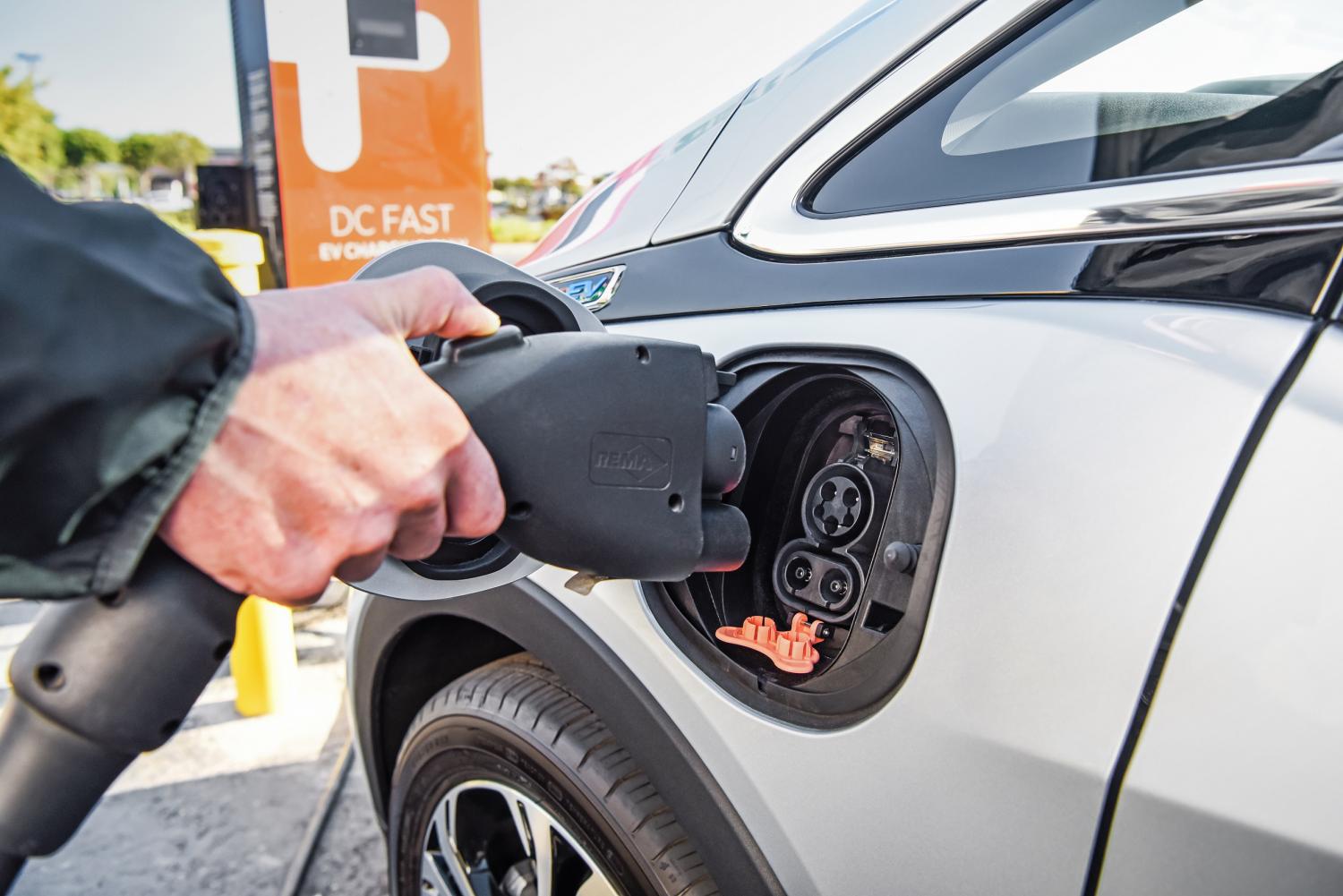

The future of transport is closer now that General Motors and Bechtel will join forces to build thousands of electric vehicle charging stations in the U.S.
Bloomberg NEF’s latest forecast for global electric vehicle sales hit the news wires just last week, and already there are indications that fleet managers who transition to electric vehicles (EVs) are making a solid bet on the future of transportation. In one significant development, General Motors and Bechtel have teamed up to build thousands of electric vehicle charging stations in the U.S.
Which comes first, the electric vehicle or the charging station?
If all goes according to plan, the new venture will be a win-win for fleet managers.
With more public charging stations available, electric vehicle drivers will no longer have to search far and wide to charge up.
The “fast” part of the charging venture is also important. Long charging times can be a deterrent to electric vehicle ownership. Picking up the pace of charging is a key factor.
GM should know. The company introduced its first electric vehicle, the EV-1, back in the 199s when public charging stations were practically non-existent. Drivers could expect to go about 80 miles before plugging into a household outlet in order to recharge. Typically that would take a good 15 hours or so.
That was for the first iteration of EV-1. GM later developed an EV charging station that could deliver a full charge in three hours for the second generation of EV-1.
Despite the improvement, by 2003 GM consigned both generations of EV-1 to the dustbin of history. The car had its fans but it was no match for the convenience of gas-powered transportation.
Fortunately, that was not the end of GM’s electric vehicle plans. Just a few years later, in 2007 GM introduced the concept for an electric car designed to work around the EV charging issue. The new Chevy Volt began rolling off the assembly line in 2010. It sported an all-electric drive, which could be powered by gasoline if the battery ran low.
GM's eventual pathway to an all-electric future
That effectively put the “range anxiety” issue to rest. Nevertheless, earlier this year GM officially retired the Volt.
So, what changed?
In some ways, the Volt was a victim of its own success. It helped to motivate improvements in EV battery technology that enabled all-electric models with far greater range than the EV-1, while lowering costs.
GM introduced the all-electric Chevy Bolt in 2016, for example, with a range of 238 miles.
In 2017 GM upped the ante with a pledge to introduce 20 new all-electric models by 2030. So far it is on track to make good on that commitment.
Earlier this spring, GM announced that it will add 400 new jobs to its Orion plant in Michigan. The facility already manufactures the Bolt electric vehicle. The new jobs involve the production of a second all-electric car based on the Bolt platform.
On May 20, GM also announced a new new digital platform aimed at facilitating its plunge into the electric vehicle market. The platform will debute when the automaker releases the 2020 Cadillac line.
Where are all the electric vehicle charging stations?
Against this backdrop, the new venture with Bechtel comes into sharper focus.
Neither company has released a public announcement, but earlier this week CNN reported that plans are in the works for a network of fast-charging stations.
The endeavor will take a data-based approach to finding the most effective sites for the new charging stations, with GM applying its analytics from its OnStar system to the task.
Instead of taking the standard route of building new charging stations along major highways, the two partners will focus on urban areas and other locations where people drive and park.
Bechtel will lend its considerable experience to unlock efficiencies in permitting and construction.
The advantages of an exponential increase in charging stations is obvious for GM, in terms of selling more electric vehicles. Bechtel also stands to gain by promoting the growth of a major new demand sector for electricity generation in the U.S.
Electricity demand in the U.S. overall has slowed in recent years, partly due to changes in the economy and partly as a result of improved energy efficiency in buildings. Growth in the electric vehicle market can help offset that trend (as a side note, GM itself is a strong proponent of building energy efficiency).
Bechtel is in a good position to capitalize on growth in electricity demand sparked by the electric vehicle market, especially as fleet managers seek to incorporate more renewable energy into their vehicle fuel supply chain.
Though better known for its history in nuclear energy, Bechtel has emerged as a major renewable energy developer, too.
The EV charging station race heats up
If the new partnership comes to fruition, it also puts more pressure on the high-profile Tesla electric vehicle company to democratize its charging stations.
Tesla has done an effective job of popularizing electric vehicles, but early on the company chose an exclusive configuration for its charging stations. Adapters are available, but as the EV competition heats up the failure to standardize could become an obstacle.
In contrast, the new GM-Bechtel venture will reportedly be available to all EVs.
CNN also notes that the Volkswagen emission scandal settlement will finance a $2 billion EV charging station investment available to any and all models of EVs.
Major oil companies like Shell and BP have also seen the electric vehicle writing on the wall, and are investing in open-access EV charging stations.
As for the charging time factor, GM has been working on improved battery technology that will enable drivers to gain 180 miles of range with a charging time of just 10 minutes.
The U.S. Department of Energy is also supporting this holistic approach with an initiative to develop “extreme” fast-charging stations in concert with new battery technology.
Image credit: GM
5 U.S. Cities Are Scoring a Cycling Makeover by 2020


Can rethinking our public transportation and cycling infrastructure help the U.S., and the world, meet our climate action goals?
It’s been a long three years since the Paris Climate Agreement was signed in April 2016. President Donald Trump pulled the U.S. out of the agreement (which will be finalized next year), nixed the Clean Power Plan and has allowed the EPA to be staffed with policymakers friendly to the fossil fuel industry. While states and municipalities are trying to pick up the slack, meeting the goals to which the U.S. agreed during the COP 21 climate talks in December 2015 will be a tall order.
In fact, U.S. efforts thus far are “critically insufficient,” according to Climate Action Tracker.
The National Association of City Transportation Officials (NACTO) says it’s doing its part to turn this story around by partnering with five cities to develop cycling and public transit projects that will help them meet or exceed their imminent climate goals. The cities involved in this program are Atlanta, Boston, Denver, Minneapolis and Philadelphia—and they'll see these projects come to fruition by the end of next year.
As transportation is the largest contributor to U.S. carbon emissions, NACTO makes the case that increasing sustainable transportation infrastructure can significantly reduce emissions. The program will be based on NACTO’s Accelerator, which provides cities assistance on strategies that can help increase public transport ridership, reduce solo driving, and add to the number of citizens who cycle between home and work. The purpose of the program is not only to create infrastructure that can alter city residents’ habits, but also to establish in these cities the knowledge, process and support to transform transportation infrastructure.
The cities will work with NACTO, the Natural Resources Defense Council, and Delivery Associates to build successful bike or public transit corridors as part of Bloomberg Philanthropies’ American Cities Climate Challenge. At least 25 cities across the U.S. are participating in this initiative to accelerate efforts to curb climate change.
Improved bike and public transportation infrastructure together can not only decrease greenhouse gas emissions, but also boost local business. For example, over two-thirds of local businesses in San Francisco’s Valencia Street district said increased bike infrastructure in the area “had an overall positive effect on their business.”
Studies have shown that cyclists, public transportation users and pedestrians often spend more money in local neighborhoods. A survey focused on two northern California cities, for example, found that shoppers who used transit, walked or cycled spent more per month at local businesses because they visited these retail centers more often. Another study in Melbourne, Australia, concluded that drivers spent more money per hour than bikers while shopping, but because six bikes can fit into one parking space, businesses would benefit over three times more from safe and adequate cycling infrastructure than from street parking.
Additional surveys have suggested the economic impact of solo automobile commuters in local communities is minimal at best. A study in Manhattan’s East Village, which recently installed protected bike and bus lanes, for example, found that the vast majority (95 percent) of retail dollars in the area were spent by public transit and non-motorized transportation users. Additionally, 73 percent of survey respondents reported that new protected bike lanes had a “positive or very positive” impact on the neighborhood.
Residents of Atlanta, Boston, Denver, Minneapolis and Philadelphia may need some time to adapt and use these new cycling routes, but both residents and local businesses could benefit in the long term. Meanwhile, these projects, if they scale up, can help the U.S. take on climate change by cutting emissions from automobiles, while reducing traffic congestion and offering a better quality of life.
Image credit: Andrew Gook/Unsplash
GM, Energy Efficiency and the Automaker’s Bottom Line
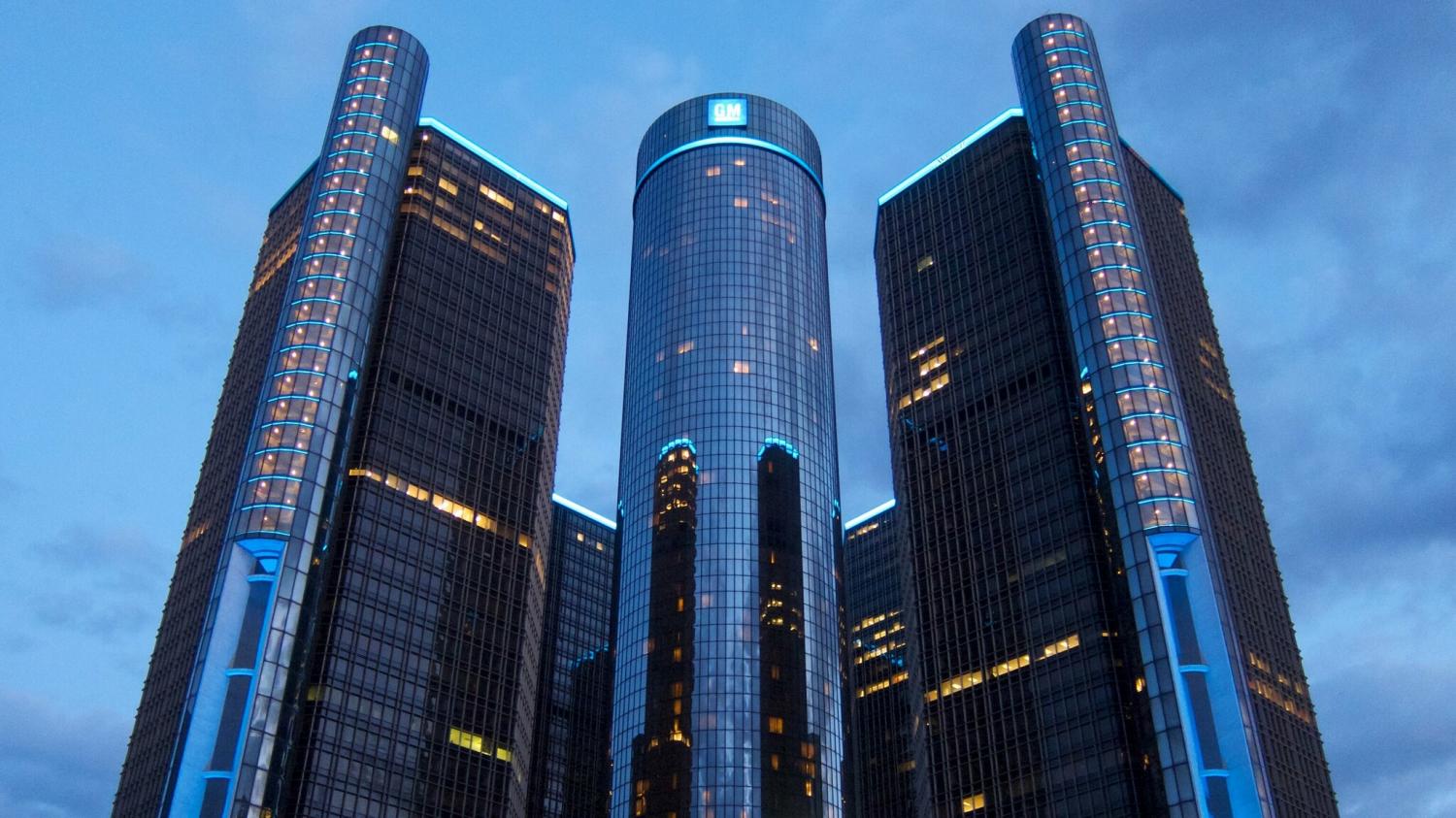
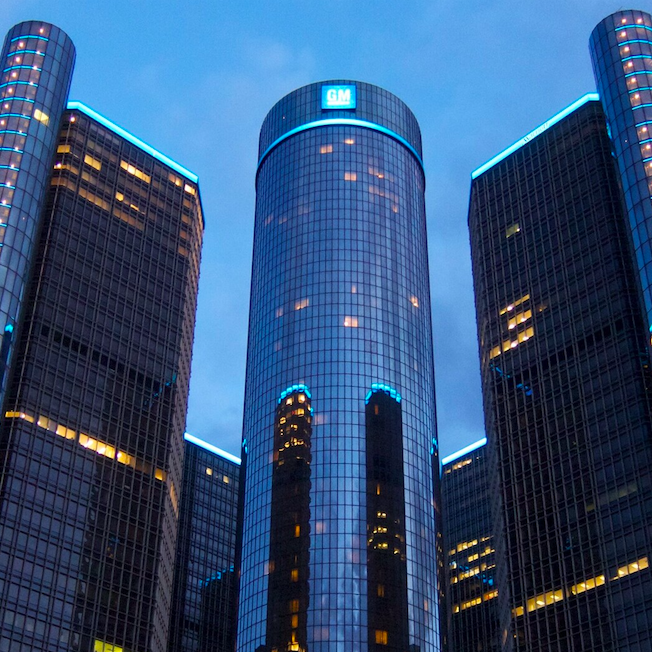
Editor's Note: This story is part of an editorial series featuring companies on CR Magazine's 20th annual 100 Best Corporate Citizens ranking, which recognizes outstanding environmental, social, and governance (ESG) disclosure and performance among the Russell 1,000 Index. You can follow the series here.
Partnering with local utilities has become critical for energy efficiency strategy at General Motors (GM).
Last year, GM completed a series of 21 energy efficiency projects at its Flint Assembly plant and received a payment of $2.8 million from its utility, Michigan-based Consumers Energy.
That brings the total amount of payments to $13.3 million over the past 10 years for energy efficiency improvements at various GM facilities in Michigan.
For a decade, Consumers Energy and General Motors say they have collaborated on efforts that protect the planet. The utility says it has helped Michigan homes and businesses save over $2 billion in costs since 2009 through its various energy efficiency programs and rebates.
"General Motors is an example to all businesses, large and small, of how to take control of energy use and reduce costs while protecting the planet," Brian Rich, Consumers Energy’s senior vice president for customer experience, said in a public statement. "They show it's possible to make decisions that are good for business and the environment."
Consumers Energy, Michigan's largest energy provider, is the principal subsidiary of CMS Energy, which provides natural gas and electricity to a total of 6.7 million of the state's 10 million residents across the 68 counties in the Lower Peninsula.
Beyond energy efficiency
Energy efficiency goes hand in glove with renewable energy when the ultimate goal is to reduce carbon intensity.
Through a combination of energy efficiency and investments in renewables, GM has already beat a 10-year, 20 percent carbon intensity reduction it set in 2010.
With that in mind, it’s worth nothing that GM received 135 Energy Star recognitions from EPA this year, making it the most-awarded company to participate in this program.
GM is also the only auto manufacturer on the list of top 100 renewable energy users tracked by EPA’s Green Power Partnership.
GM earned the #29 slot on that list, and it is also #14 among Fortune 500 companies that have appeared on these latest rankings. In addition, the automaker is currently perched at the #6 position in the partnership’s list of on-site clean energy generators.
Scaling up for cutting down on carbon intensity
Currently, more than 10 percent of GM’s overall power needs in the U.S. come from renewable energy.
Now, the company has its sights set on 100 percent renewable energy by 2050, and says it will accomplish that by leveraging both energy storage and energy efficiency.
To meet that goal, GM needs to enlist economies of scale and stimulate growth throughout the entire clean technology supply chain.
Partnering with local utilities such as Consumers Energy is an important element in that strategy.
For the past 10 years, GM has participated in an energy efficiency payment initiative with Consumers Energy, and this year Consumers Energy tapped GM to participate in a new program that enables the company to claim 100 percent renewable energy for its operations in Flint.
In addition, last year the utility’s parent company, CMS Energy, began providing wind power for GM’s Ohio operations. Other utilities are partnering with the automaker, too.
Earlier this year, GM started working with the utility DTE for a program that will enable it to claim 100 percent wind-sourced electricity at its global center in Warren, Michigan, and at its operations in the Renaissance Center (pictured above) in downtown Detroit.
GM's work with power generation companies, both large and small, is a template for how other multinational companies, regardless of industry, can work in lockstep with utilities to reduce energy consumption, which in the long term is a net positive for local communities and the planet.
Whether or not the U.S. government is in - or out - of the 2015 Paris Agreement on Climate Change, companies like GM are seeing the low-carbon economy of the future, and they are deploying both energy efficiency and renewable energy technologies to help get there.
Image credit: GriYYZ/Flickr
From Go Green Finalist to Schneider Electric Employee


Kanika Kapila (shown above, second from the right) is a 2018 Go Green global finalist and now a Schneider Electric employee in Canada. Aside from work and school, she enjoys rock climbing, swing dancing, skiing and photography.
In this blog, she describes her exciting journey from the Go Green challenge to joining Schneider Electric’s team in Canada.
Sharing passion for green and sustainable energy
Being a chemical engineering student at the University of Calgary I was fascinated by the oil and gas industry. I developed a huge interest in the green energy sector especially topics surrounding energy management, process optimization and creating a balance between the two industries to eventually lead our world towards sustainability.
Therefore, to further my learning in that area of interest I decided to pair up my chemical engineering major with energy and environmental engineering. This allowed me to take part in several green projects on campus and with the city of Calgary. Just before I thought it was time to wrap up my final year of engineering, the Go Green challenge caught my eye. I knew I had to participate and share my passion for green energy on a global platform.
Recycling greenhouse gas emissions into renewable products
To enter the competition our team had to write a business proposal to Schneider Electric. We had to explain our green idea and how it can make our city greener and sustainable. After hours of brainstorming and plenty of research, we proposed a design for a chemical process that would recycle greenhouse gas emissions released from the power plants and convert them into renewable products. The goal of our design was to reduce the overall carbon footprint of the power industry and decrease annual GHG emissions.
We did a detailed design and economic analysis to deem the process to be both technically and economically feasible. We submitted the business proposal and patiently waited for the results. I knew the competition was fierce. There were 20,000 applicants globally the year before! Therefore it was a total shock for me when we heard back from the organizers that our team was selected for the North American semi-finals and will be flying to Boston. I was on cloud nine and one step closer to the global platform.
Boston calling
I was super excited to fly to Boston. First of all, I had the opportunity to learn more about Schneider Electric. Secondly, I networked with Schneider employees and learned about their career paths. Also, we got a tour of the Boston campus and learned about fascinating technologies been implemented to make the building energy efficient. Finally, I was absolutely wowed after listening to the business proposals presented by our fellow semi-finalists.
Overall it was an incredible learning experience for me. Our team was placed second in the semi-finals. We were recognized as the only Canadian team that qualified to the North American regional finals. The Boston trip ended with great learning experience, achievements, great friendships and memories I will cherish forever.
Read the rest of this story on the Life @ Schneider Blog. Also posted on the 3BL Media Newsroom.
Image credit: Scheider Electric; Where Women Work/Facebook
Why Now’s the Time to Join the Electric Vehicle Revolution
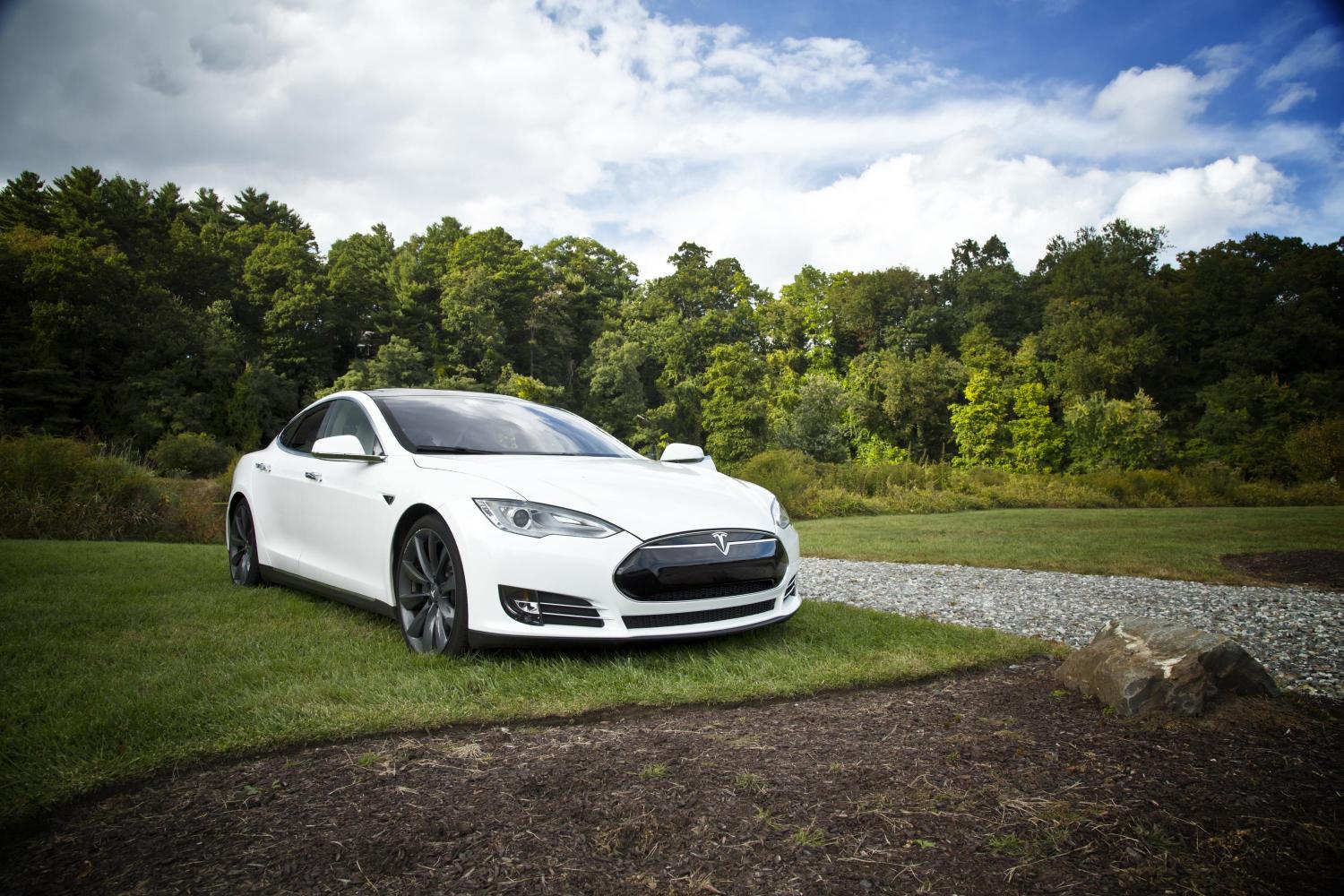
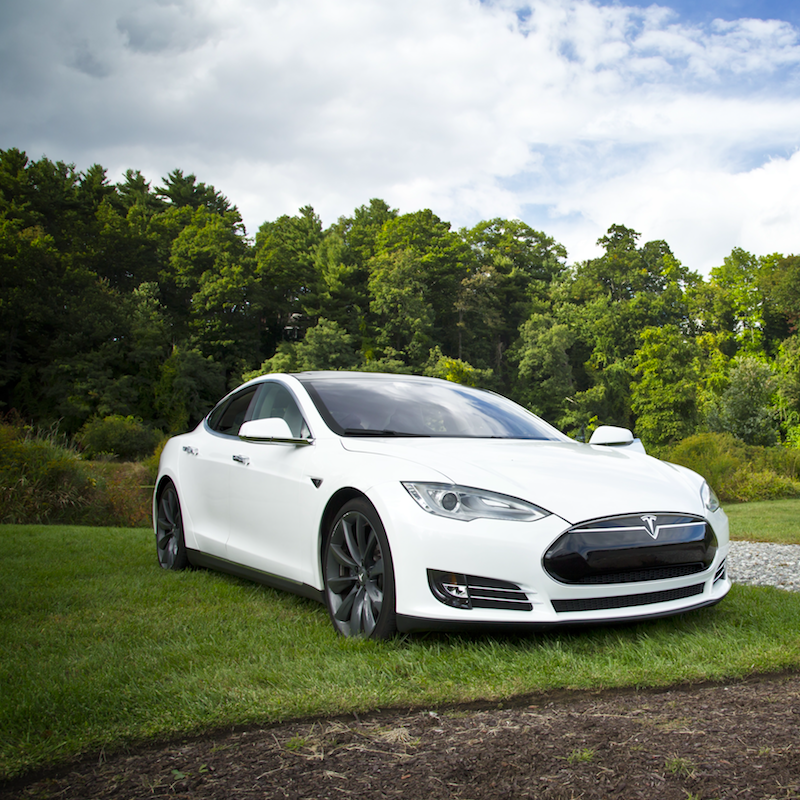
According to BNEF, the electric vehicle revolution is underway as more companies phase out diesel- and gasoline-fueled cars and transition fleets to EVs.
More companies are transitioning their fleets to electric vehicles, and for good reason. Though the up-front price of a zero-emission electric vehicle is still relatively high, the all-important lifecycle costs are competitive with conventional vehicles. Just as importantly, clean, quiet, zero emission vehicles give companies a competitive edge when it comes to winning the hearts and minds of consumers, supply chain officers and fleet managers.
The electric vehicle revolution is here
A new EV forecast from the clean technology research firm BloombergNEF (BNEF) underscores how quickly electric vehicles will come to dominate the transportation landscape.
The message is clear for fleet managers: as your older vehicles need to be phased out, now is the time to transition to EVs. Otherwise, you’ll be stuck with a conventional fleet of conventional vehicles while the competition surges ahead on zero-emission technology.
BNEF’s head of advanced transport, Colin McKerracher, explains:
“…Electrification will still take time because the global fleet changes over slowly but, once it gets rolling in the 2020s, it starts to spread to many other areas of road transport. We see a real possibility that global sales of conventional passenger cars have already passed their peak.”
The new report, titled Electric Vehicle Outlook 2019, describes several distinct aspects of the EV market.
BNEF foresees the quickest transition in the category of passenger cars, buses and short-haul trucks.
The report estimates the proportion of global EV sales as compared to all vehicle sales by 2040 and forecasts a 57 percent market share for passenger cars.
Municipal buses fare even better at 81 percent.
BNEF broke the category of short-haul trucks down into light and medium weight. At 56 percent, light trucks will penetrate about as rapidly as passenger vehicles in Europe, the U.S. and China.
What about electric long-haul trucks?
The outlook for medium trucks is far more modest, at only 31 percent.
That’s partly because EV batteries are heavy and bulky. They take up weight and space that could be used for cargo.
Time is a key consideration in the razor-thin calculations that characterize today’s logistics sector, so another factor is the time it takes to charge a truck-sized battery pack, compared to fueling up a gas tank.
Those disadvantages come into sharper focus in the category of heavy duty, long haul trucks. BNEF forecasts only 19 percent market penetration in that market.
That doesn’t necessarily mean diesel-powered trucks will continue to dominate the medium and long-haul markets. BNEF foresees that other low or zero emission technology will also compete for attention from truck buyers.
BNEF cites natural gas as one potential competitor, but the outlook for hydrogen fuel cells appears to be much stronger.
For those of you who are new to the topic, fuel cell vehicles are electric vehicles. Instead of using a battery that must be charged over a period of time, fuel cells generate electricity on-the-go through a chemical reaction. They can be refueled in about as much time as filling up a tank of gas.
California and several other U.S. states have emerged as global hotspots for accelerating hydrogen fuel cell transportation, along with Japan and Europe. Those initiatives are taking place alongside efforts to produce hydrogen from renewable sources (currently the main source of hydrogen is fossil natural gas).
In particular, the U.S. startup Nikola has been accelerating the market for fuel cell trucks in tandem with renewable hydrogen production. The company expects to have 700 hydrogen truck fueling stations in operation by 2028.
Nikola launched pre-orders for its first long-haul fuel cell-powered semi in 2017. Last year, the company secured a pledge from Anheuser-Busch for up to 800 fuel cell trucks and this year it secured an agreement for a truck manufacturing facility in Arizona. The factory is expected to produce at an initial rate of 35,000 trucks annually and hit 50,000 per year when fully operational in 2024. Nikola is also venturing into the off-road and military vehicle categories.
UPS is also among the other U.S. companies experimenting with fuel cell technology.
A hydrogen factor behind the battery EV revolution
Toyota is another fuel cell early adopter, and its vision of a zero emission “hydrogen society” demonstrates how fuel cell trucks could help accelerate the market for battery electric vehicles as well as fuel cell vehicles.
That’s because the main pathway for sustainable hydrogen production involves “splitting” water with an electrical current, sourced from wind turbines or solar panels.
In other words, renewable hydrogen can help incentivize wind and solar development, providing electricity for both sustainable hydrogen production and EV battery charging.
Toyota’s holistic approach is especially evident in its partnership with 7-Eleven, which involves on-site, sustainable hydrogen production. If all goes according to plan, this model could help companies like 7- Eleven grow without a consequent increase in their carbon footprint.
More hidden factors behind the electric vehicle revolution
BNEF also highlights the changing role of passenger car ownership and usage patterns.
Here in the U.S. and elsewhere, interest in individual ownership has been dropping off a cliff as populations concentrate in urban areas where mass transportation, bicycles, and scooters offer working alternatives.
That leaves the door open for a new generation of fleet vehicles serving the needs of ride-share customers.
BNEF anticipates that ride-sharing fleets will electrify more quickly than individual car buyers, though the road to significant market penetration may be a rocky one.
For example, Ford was an early adopter of the mobility-as-a-service model, but it cut the cord on its Chariot ride-share service earlier this year.
Climate change and the bottom line
Most importantly, the new BNEF report also throws down a challenge to companies that seek a vanguard position in the low carbon economy of the future.
Despite some strong indications that on-road vehicle emissions will plunge as 2040 draws closer, BNEF foresees that emissions will actually continue to rise over the next 10 years.
That’s a dire prediction in the context of the latest IPCC forecasts, but it also creates a golden opportunity for the sustainable business community to prove the forecasters wrong.
With the urgency of climate action in mind, and the costs of doing nothing continuing to mount, companies have ample incentive to transition to zero emission vehicles as quickly as possible.
Image credit: Pixabay